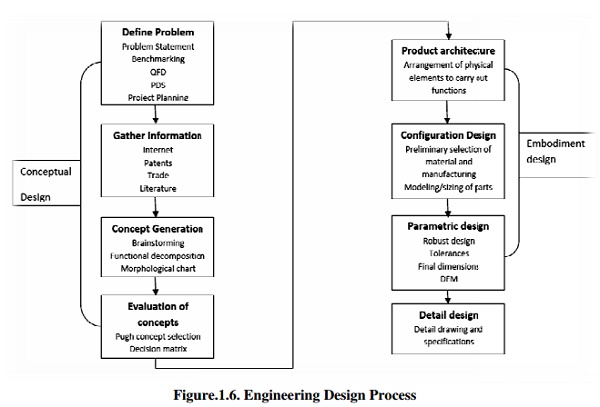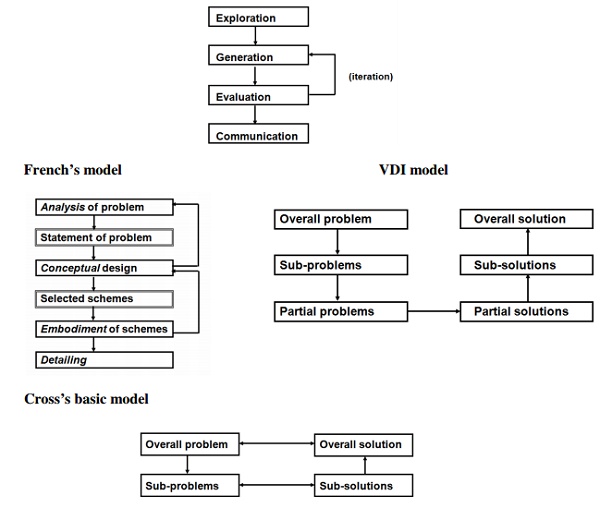Chapter: Mechanical : Computer Aided Design : Fundamentals of Computer Graphics
Engineering Design Process
THE DESIGN PROCESS - INTRODUCTION
The Engineering Design Process is the formulation of a plan to help an engineer build a product with a specified performance goal. This process involves a number of steps, and parts of the process may need to be repeated many times before production of a final product can begin.
It is a decision making process (often iterative) in which the basic sciences, mathematics, and engineering sciences are applied to convert resources optimally to meet a stated objective. Among the fundamental elements of the design process are the establishment of objectives and criteria, synthesis, analysis, construction, testing and evaluation.
The Engineering Design process is a multi-step process including the research, conceptualization, feasibility assessment, establishing design requirements, preliminary design, detailed design, production planning and tool design, and finally production.
1. Steps involved in Enginee ring Design process

Figure.1.6. Engineering Design Process
Conceptual Design
It is a process in which we in itiate the design and come up with a number of design concepts and then narrow down to the singl e best concept. This involved the following step s.
• Identification of customer needs: The mail objective of this is to completely understand the customers’ needs and to c ommunicate them to the design team
• Problem definition: The mail goal of this activity is to create a statement that describes what all needs to be accomplished to meet the needs of the customers’ requirem ents.
• Gathering Information: In this step, we collect all the information that can be helpful for developing and translating the customers’ needs into engineering design.
• Conceptualization: In thi s step, broad sets of concepts are generated th at can potentially satisfy the problem statem ent
(5) Concept selection: The main objective of this step is to evaluate the various design concepts, modifying and evolving into a single preferred concept.
Embodiment Design
It is a process where the structured development of the design concepts takes place. It is in this phase that decisions are made on strength, material selection, size shape and spatial compatibility. Embodiment design is concerned with three major tasks – product architecture, configuration design, and parametric design.
a. Product architecture: It is concerned with dividing the overall design system into small subsystems and modules. It is in this step we decide how the physical components of the design are to be arranged in order to combine them to carry out the functional duties of the design.
b. Configuration design: In this process we determine what all features are required in the various parts / components and how these features are to be arranged in space relative to each other.
c. Parametric design: It starts with information from the configuration design process and aims to establish the exact dimensions and tolerances of the product. Also, final decisions on the material and manufacturing processes are done if it has not been fixed in the previous process. One of the important aspects of parametric designs is to examine if the design is robust or not.
Detail Design
It is in this phase the design is brought to a state where it has the complete engineering description of a tested and a producible product. Any missing information about the arrangement, form, material, manufacturing process, dimensions, tolerances etc of each part is added and detailed engineering drawing suitable for manufacturing are prepared.
2. Models of the Design Process
Designers have to:
Explore - the problem ‘territory’
Generate - solution concepts
Evaluate - alternative solution concepts
Communicate - a final proposal
A simple model of the design process, derived from what designers have to do

3. New Design Procedures

4. Need for Applying Technoology in the Design Process
Design is the essence o f engineering
Starts with recognition of some need
Progresses to physical implementation
Results may be simple or complex
Design can be of two k ind:
O Something com pletely new , or
An improved f orm of something already in existence
Related Topics